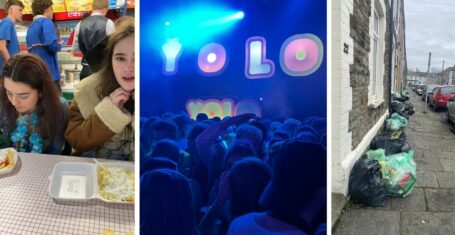
A third year with a rare blood disorder needs a stranger’s bone marrow
Alice’s cure is dependent on a bone marrow transplant
Alice Byron, a third year studying English at Cardiff Uni, first began to feel ill this summer.
The undergrad said that she thought her illness would be easily treatable, however, she has now been told the best chance of a cure is a bone marrow transplant from a complete stranger.
Alice, 20, said she felt tired often but thought it was a typical part of working long hours over summer at a catering company.
Third year Alice has been diagnosed with a rare blood disease
Alice said: “I didn’t go to my GP because I didn’t want to bother them, but one day I went shopping and I was sick everywhere.
“I was so humiliated and embarrassed. I knew something was wrong and went to the doctors as I just didn’t feel like myself.”
Alice then found herself covered in huge, dark, purple bruises which she put down to work.
She was persuaded by a friend to book a blood test and her results were marked as urgent.
Alice (far right) and friends at Yolo
Initially, doctors believed that Alice may have anaemia, however tests revealed her condition to be far more serious.
It was at this point when Alice was told she had a blood disorder called myelodysplastic syndrome (MDS) which was very likely to develop into acute myeloid leukaemia .
Alice said when she first received the diagnosis it “didn’t sink it at all.”
She said: “It took a long time to register that this was going to affect my future. I was convinced it would be easily treatable and have little impact on my life, but that isn’t the case.
“It feels like I have to put my life on hold for now. Putting my ambitions and the normal hopes and dreams of a young person aside has been really hard to come to terms with.”
Alice and her housemates
Doctors have told Alice that her best hope of a long term cure is a bone marrow transplant.
Unfortunately, none of Alice’s siblings were a match and so the Cardiff student is now reliant on a stranger to save her life through the Anthony Nolan donor register.
“My recovery is now in the hands of other people, which is a strange, uncertain feeling,” she stated.
“It’s amazing to know there are people out there who are willing to help people they don’t know and who have signed up to the donor register.
“I think signing up to the register is something that a lot of people mean to do but maybe don’t get round to it.
Alice’s best hope may come from one of her classmates.
Alice and her boyfriend
Anthony Nolan have published statistics which show an incredible one in four bone marrow donors are found at university by student volunteer groups called “Marrow” groups.
Young people are the most likely to donate. In the last two years, student donors have given 227 strangers the chance of life by donating.
Karen Archer, the regional register development manager at Anthony Nolan explained how easy it is to join: “All you have to do is fill out a simple form and provide a saliva sample.”
Alice featuring Ladybird’s Mavis
Alice has been transferred to the Heath hospital to continue her treatment to allow her to carry on her studies at university.
Although over the moon to be back at uni, Alice still faces challenges. She said: “What I’m finding really difficult is how all my friends and people on my course are thinking about normal things all the time, like dissertations and nights out.
“A lot of the time all I can think about is am I being overly paranoid or do I feel worse today? What if I’m getting leukaemia and no one has noticed yet?”
It only takes one spit
Alice went on to say: “I am struggling to keep up with my friends, in terms of nights out and socialising. It’s hard because I’ve always been active and having to accept that I need to stay in and sleep sometimes isn’t always easy.
“I have no idea how long I’ll be in Cardiff for. I could make it until June or only be here for another three weeks, as a donor could come up at any time.”
If you are aged 16-30 and in good health sign up to the Anthony Nolan register here.
To follow Alice’s story, visit her blog.









































